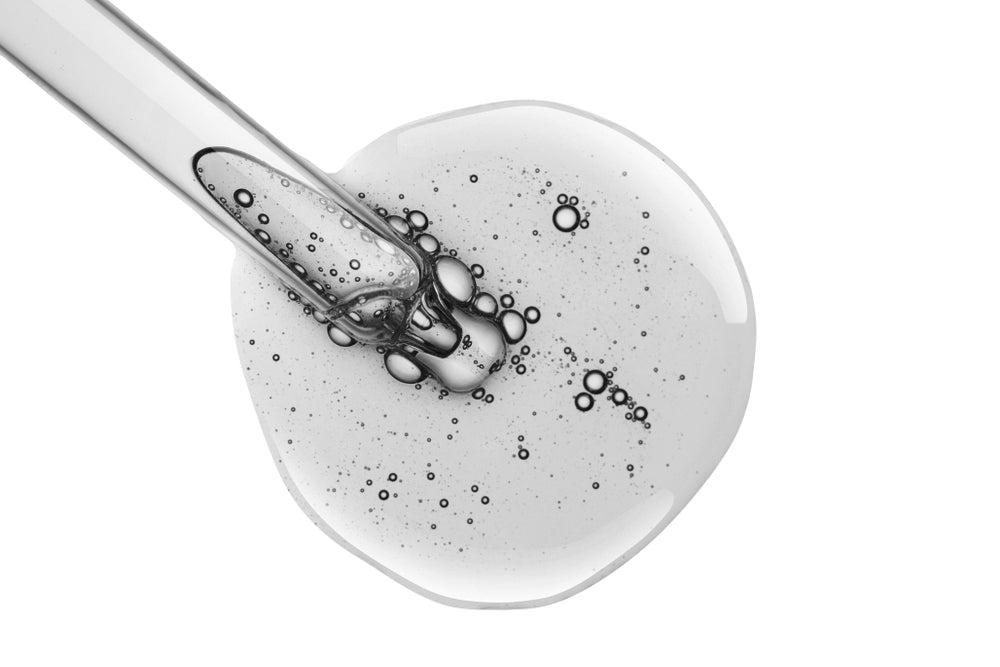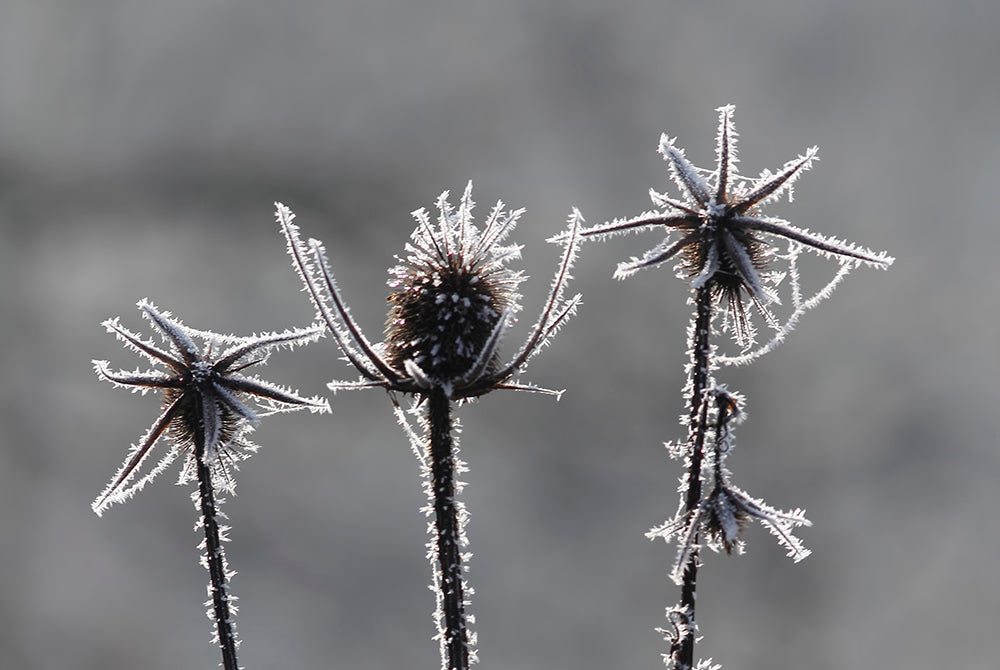article: ingredient focus: ceramides

ingredient focus: ceramides
the bottom line
You may not have heard of ceramides, an essential component of the lipid matrix of the skin. Ceramides are a form of lipid found in the outer layer of the skin. They act as the glue that holds skin cells together, forming the skin barrier. Topical ceramides in moisturizers help to replenish ceramide levels which diminish with age or due to various skin conditions. For more about the role of this true warrior for skin health, keep reading.
first layer: the skin barrier
Before diving into ceramides, it’s helpful to review the role of the skin barrier*. Our skin is first and foremost a barrier – it protects us against external factors such as pathogens, ultraviolet (UV) radiation, allergens, and chemicals, while limiting the loss of water and small molecules from the skin and regulating body temperature. The skin has three basic layers: epidermis, dermis, and subcutaneous tissue (or hypodermis). The top layer, the epidermis, consists of five layers: stratum corneum, stratum lucidum, stratum granulosum, stratum spinosum, and stratum basale. The healthy epidermis maintains a balance between proliferation and desquamation (shedding of skin cells) which results in complete renewal every 28 days.
What is the skin barrier? The skin barrier is the outer layer of the epidermis, the stratum corneum, which contains both protein-rich cells and a lipid-rich intercellular space. The stratum corneum is often compared to a brick wall, with the individual corneocytes representing the bricks. The grout or mortar between the bricks contains a matrix of essential lipids including cholesterol, ceramides, and fatty acids. The effectiveness of this lipid barrier is dependent upon the concentration and relative proportions of these lipids. The lipid matrix consists of 10-25% free fatty acids, 20-25% cholesterol, and 40-50% sphingolipids*, primarily ceramides. If the architecture of the lipid matrix is affected by a discrepancy in its composition, the barrier function is affected, and various skin conditions may be seen.
How does the skin barrier get damaged? Both external and internal factors can affect the skin barrier. These can include environmental changes (air which is overly dry or humid can negatively affect the skin); allergens and pollutants; overexposure to UV radiation; alkaline soaps and detergents; harsh chemicals; excessive exfoliation; steroids; stress; and genetic factors.
What happens when the skin barrier is damaged? When the skin barrier is damaged, you may notice various skin conditions, including dry and scaly skin, itching, rough patches, acne, inflammation, and infection.
second layer: the science of ceramides
As mentioned above, the lipid matrix within the skin barrier is composed of fatty acids, cholesterol, and ceramides. Ceramides are a heterogenous group of stratum corneum sphingolipids which act to strengthen the skin barrier, retain moisture, and protect against environmental damage. As such, they are essential for skin health.
Ceramides have three parts: a sphingosine* backbone, a fatty acid chain, and a polar head group. When ceramides are listed as ingredients that they have a specific nomenclature with letters. The first letter refers to the fatty acid on the ceramide, while the second letter refers to the base of the ceramide. For example, ceramide NP contains a base of phytosphingosine (P) and a non-hydroxyl fatty acid (N). Some oils which naturally contain ceramides include rice bran oil, wheat germ oil, and plant oils rich in linoleic acid, such as sunflower oil.
Ceramide NP is the most abundant ceramide in human skin, helping to maintain the skin barrier and retain moisture in the skin. Within the stratum corneum, most of the ceramides belong to the non-hydroxy family (NP, NH, NS, NDS), followed by alpha-hydroxy ceramides (AH, AP, AS), and then the gamma-esterified ceramides (EOS, EOH, EOP). The stratum corneum lipid composition varies according to the part of the body, with differences seen between the face, back, arm, and hand.
Ceramides play a role as anti-inflammatory mediators, assist in skin repair, and prevent transepidermal water loss (TEWL)*. Various factors can affect ceramide levels, including:
- the season: the level of total ceramides is decreased in winter and there is an increase in TEWL
- aging: with age, the epidermis shows a decrease in the levels of all major lipid species and in particular ceramides. In post-menopausal women, there is a significantly decreased level of total ceramides in the skin.
- UV exposure also affects ceramide levels.
Skin diseases have been associated with changes in ceramide profiles. These include the following:
- atopic dermatitis*: atopic dermatitis is a type of eczema remarkable for red, flaky, itchy skin, typically affecting the inner elbows and behind the knees. It is associated with an increase in ceramide AP.
- psoriasis*: psoriasis is a chronic inflammatory skin disorder characterized by raised, red scaly patches of skin caused by an overactive immune response, which in turn leads to an accelerated skin growth cycle. The skin barrier is disturbed and a marked elevation in TEWL is noted. Ceramides AP, NP, and EOP are decreased in psoriasis, while ceramide NS is increased.
third layer: ceramides in skincare
Understanding the science behind ceramides makes their utility in skin care evident. Some benefits of topical ceramides include the following:
- skin barrier support: topical ceramides bolster barrier function by penetrating the epidermis. They are subsequently hydrolyzed to a sphingoid base and fatty acid which in turn are utilized in endogenous ceramide synthesis.
- retain moisture and prevent TEWL: by supporting the permeability of the skin, ceramides help to retain moisture and limit TEWL.
- anti-aging: ceramides combat signs of aging by helping to maintain the skin barrier and improve the appearance of the skin.
- treat specific skin conditions: replenishing levels of ceramides in the skin may be helpful for certain skin conditions which are marked by low levels of this lipid, specifically psoriasis and atopic dermatitis.
fourth layer: how we do it
Both our rice bran & pomegranate facial cleansing oil and our sake & sandalwood facial lotion contain rice bran oil, which has natural ceramides for skin barrier support.
Our ceramide restorative hand crème was developed to hydrate and soothe the hands of our founder Dr. Naidu immediately following surgery. This crème layers mango butter, ceramide NP, marula oil, allantoin, calendula, and amaranth for a soft formulation that absorbs quickly and restores deeply, with any sticky or waxy residue.
All this and more at www.anokhaskincare.com .
xx
anokha
references:
Legewie L. Skin-inspired and easy-to-formulate ceramide innovations. SOFW J 2024; 150: 62-66.
Fattorini G, Altien E. User-friendly ceramide to rebuild the skin. SOFW J 2023; 149: 6-9.
Schild J, Kalvodova A, Zbytovska J, Farwick M, Pyko C. The role of ceramides in skin barrier function and the importance of their correct formulation for skincare applications. Int J Cosmet Sci 2024; 46: 526-543.
Uchida Y, Park K. Ceramides in skin health and disease: an update. Am J Clin Dermatol 2021; 22: 853-866.
Bouwstra JA, Nadaban A, Bras W, et al. The skin barrier: an extraordinary interface with an exceptional lipid organization. Prog Lipid Res 2023; 92: 101252.
*definitions:
atopic dermatitis: a type of eczema remarkable for red, flaky, itchy skin, typically affecting the inner elbows and behind the knees. it's often seen with allergic rhinitis, hay fever, and asthma.
ceramides: a class of sphingolipid which forms the backbone for all sphingolipids; they are the major lipid component of the intercellular spaces of the stratum corneum that forms the epidermal permeability barrier
psoriasis: a chronic inflammatory skin disorder characterized by raised, red scaly patches of skin caused by an overactive immune response, which in turn leads to an accelerated skin growth cycle.
skin barrier: the outer layer of the epidermis, the stratum corneum, which contains both protein-rich cells and a lipid-rich intercellular space.
sphingolipid: a class of lipids that contains a long-chain amino alcohol
sphingosine: an 18-carbon amino alcohol that is a fundamental component of sphingolipids, a class of lipids essential for cell membranes.
transepidermal water loss (TEWL): the normal movement of water from the stratum corneum to the atmosphere. when dermatitis, or inflammation of the skin, is present, there is decreased hydration of the stratum corneum and increased TEWL.
faqs:
what are ceramides?
ceramides are a class of sphingolipid which forms the backbone for all sphingolipids; they are the major lipid component of the intercellular spaces of the stratum corneum that forms the epidermal permeability barrier.
which oils contain ceramides?
some oils which naturally contain ceramides include rice bran oil, wheat germ oil, and plant oils rich in linoleic acid, such as sunflower oil.
what do ceramides do for the skin?
creating a moisture barrier, preserving hydration, regulating pH, controlling inflammation, and enhancing skin functions and appearance are among its established benefits.
what are the different types of ceramides?
ceramides have a specific nomenclature with letters. the first letter refers to the fatty acid on the ceramide, while the second letter refers to the base of the ceramide. this naming system replaces an older numbered system. for reference, ceramide 1 = ceramide EOS; ceramide 2 = ceramide NS or NG; ceramide 3 = ceramide NP; ceramide 6 = ceramide AP; ceramide 9 = ceramide EOP.



leave us a comment
This site is protected by hCaptcha and the hCaptcha Privacy Policy and Terms of Service apply.